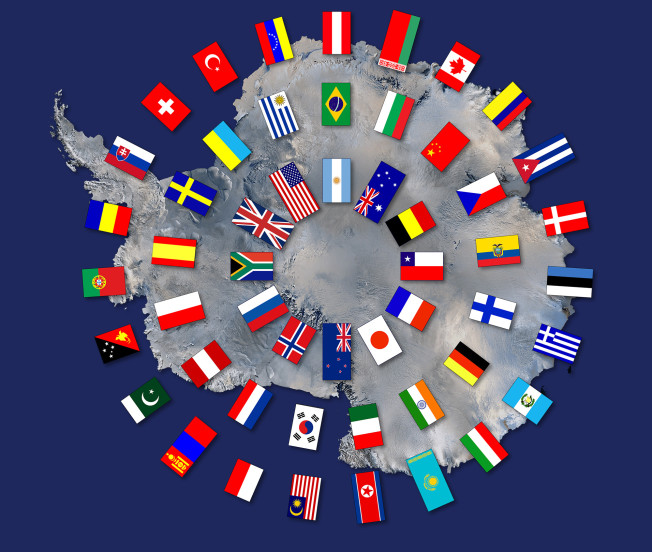Antarctica Day is internationally celebrated among countries that are involved in research in Antarctica. South Africa is the only country in Africa waving a flag on the continent.
 Activity Booklet with a competition
Activity Booklet with a competition
In celebration of Antarctica Day and Antarctica Month during December the Antarctic Legacy of South Africa has compiled a special edition of its Activity Booklet. In this booklet there is a competition for all the children of South Africa.
They should design a badge for the Antarctic Legacy of South Africa or colour in the picture (or do both). These should be posted to ALSA or delivered by hand. The first prize winner will receive a large plush penguin toy. In order for the children to enter this competition they should spot the penguin and receive an activity booklet. ALSA’s penguin will be travelling around Cape Town’s V&A Waterfront on Wednesday 30 November (including the harbour’s East Pier). The penguin will also be seen at the V&A Waterfront on Antarctica Day, a few random days during Antarctica Month, including the 20th of December.
ALSA’s penguin will also make sure that children visiting the Two Oceans Aquarium will be able to locate a booklet.
The history behind Antarctica Day
The International Geophysical Year (IGY), which spanned from 1 July 1957 to 31 December 1958 indirectly led to the initiation of the Antarctic Treaty. During the IGY 67 countries were involved and they focused on the exploration of space and Antarctica. After the IGY the intensification in Antarctic activity furthered the notion of a political agreement for the sake of international harmony on the continent.
A treaty document was drafted by the representatives of 12 nations worldwide, who came together in Washington, D.C., USA from mid-1958 until early 1959. On 1 December 1959 the Treaty was signed by the government representatives of these 12 nations of which South Africa was one. Reason enough why we as South Africans should feel extremely proud to be part of the original Antarctic Treaty. On the 23 June 1961, the treaty came into full effect.
Since then the Antarctic Treaty has been amended which lead to the Antarctic Treaty System. This system includes agreements and recommendations made at the annual Antarctic Treaty Consultative Meetings. The Antarctic Treaty System consists of these important agreements, with the Protocol on Environmental Protection (a.k.a. the Madrid Protocol) which entered into force in 1998 being at its core. This protocol is best explained (as the Treaty Parties call it) as the establishment of Antarctica as a “natural reserve, devoted to peace and science”. All Antarctic Treaty nations, 53 to date, have agreed to take responsibility for the environmental management of their Antarctic activities.
South Africa sails south for Antarctica
South Africa’s Antarctic research and supply vessel, the S.A. Agulhas II departs from East Pier in the harbour for Antarctica on Wednesday 30 November for the annual relief of the country’s Antarctic base in Dronning Maud Land, known as SANAE IV. The ship is due to return to Cape Town on 8 February next year. It is expected that the vessel will reach the Antarctic ice shelf sometime between 11 and 20 December, depending on pack ice cover on the way. The new overwintering team members and relief personnel will then, weather permitting, be transported 200 km inland to SANAE IV built on the isolated nunatak of Vesleskarvet. Read more about South Africa’s Antarctic station here (link).
Sources:
- Factsheet: Antarctica Month. Jointly issued by Department of Science and Technology and Department of Environment and Tourism (see the full published factsheet).
- The original Antarctic Treaty Document
- Secretariat of the Antarctic Treaty
- Flag: British Antarctic Survey – The Antarctic Treaty.
Anché Louw, Antarctic Legacy of South Africa, Department of Botany and Zoology, Stellenbosch University, 24 November 2016


[…] expect to see or attend in South Africa on the Antarctica Legacy of South Africa (ALSA) website, blog or Facebook page. Keep an eye out for that penguin on November 30 at the W&A […]